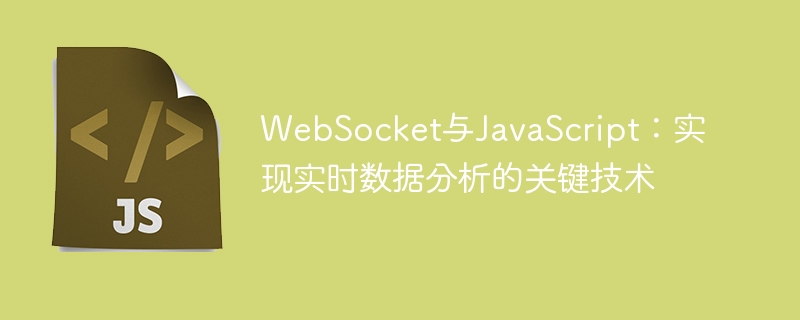

WebSocket and JavaScript: Key technologies for real-time data analysis
Introduction:
In the current Internet era, real-time data analysis is very important for enterprises and individual users are becoming more and more important. Real-time data analysis can help companies quickly grasp market dynamics and improve operational strategies. For individual users, real-time data analysis can help us better understand our own behaviors and preferences and make smarter decisions. One of the key technologies to achieve real-time data analysis is the use of WebSocket and JavaScript.
1. Introduction to WebSocket
WebSocket is a new communication protocol in HTML5, which enables full-duplex communication between the client and the server. Compared with traditional HTTP request methods, WebSocket has the following advantages:
2. JavaScript to implement WebSocket communication
Using JavaScript to implement WebSocket communication is very simple and can be completed with just a few lines of code:
1 2 3 4 5 6 7 8 9 10 11 12 |
|
In the above code, we use WebSocket API to create WebSocket objects, and set up several callback functions, corresponding to the three events of WebSocket connection opening, message reception and connection closing.
3. Key technologies for real-time data analysis
4. Code example: Real-time data analysis
The following is a code example that demonstrates how to use WebSocket and JavaScript to implement real-time data analysis, taking online game online population statistics as an example:
1 2 3 4 5 6 7 8 9 10 11 12 13 14 15 16 17 18 19 20 21 22 23 24 25 26 27 |
|
In the above code, after the client connects to the WebSocket server, the server will send a message about the number of people online to the client. After the client receives the message, it can analyze and process the data on the number of people online, for example, display it on the web page. The server will update the number of people online in real time based on client connections and disconnections, and send the updated number of people online to all clients.
Conclusion:
The combination of WebSocket and JavaScript can achieve real-time data analysis and help us better understand and utilize data. Through the two-way communication feature of WebSocket, data is transmitted to the server in real time for analysis, and JavaScript is used to process and display the data, which can meet the needs of real-time data analysis. Therefore, in the field of real-time data analysis, WebSocket and JavaScript are an important pair of key technologies.
The above is the detailed content of WebSocket and JavaScript: Key technologies for real-time data analysis. For more information, please follow other related articles on the PHP Chinese website!
